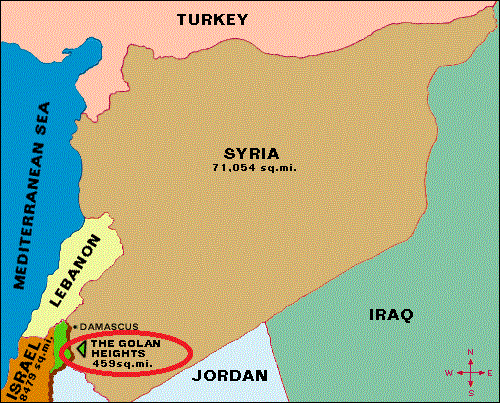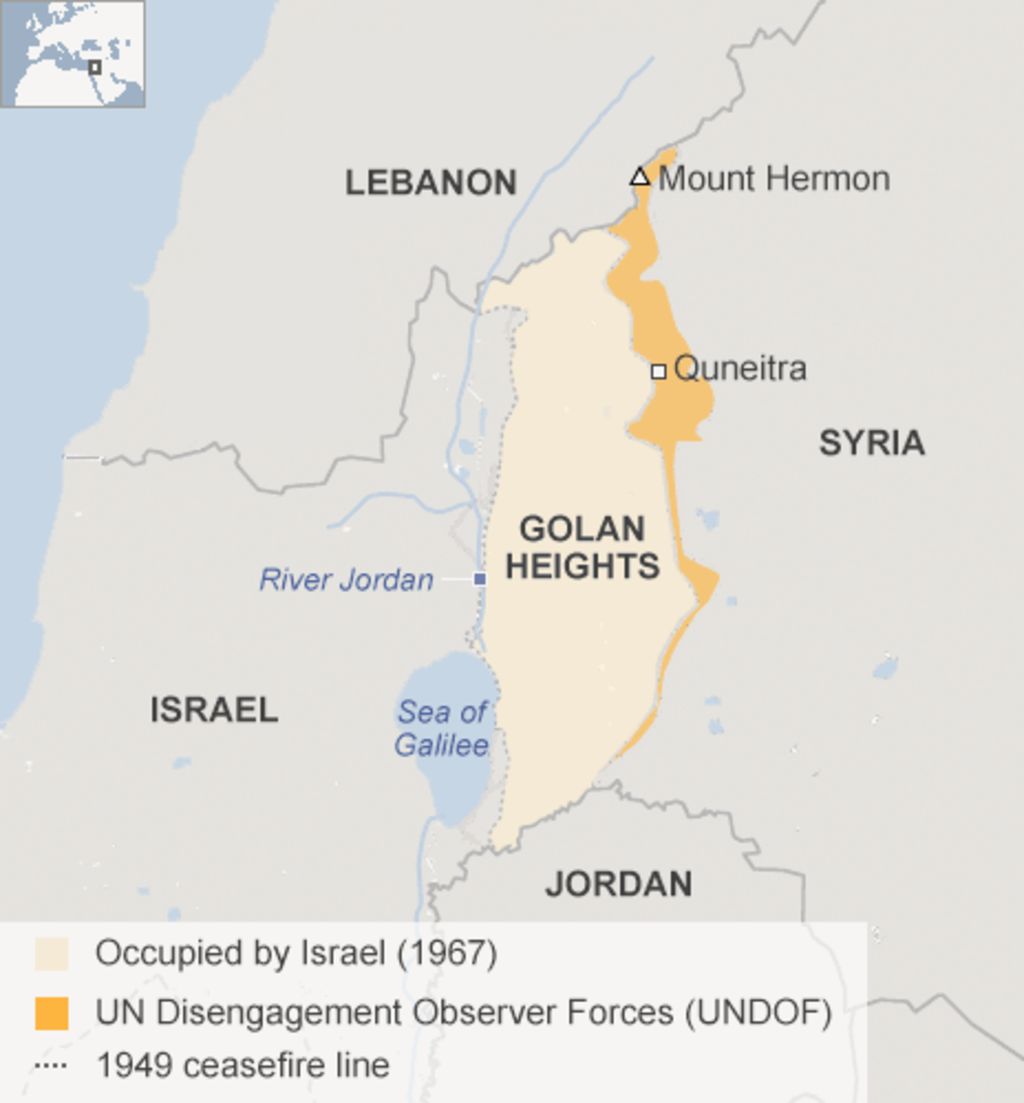Why in news?
U.S. President Donald Trump recently said that the U.S. should back Israeli sovereignty over the Golan Heights, seized from Syria in 1967.
What is the significance?
- In December 2017, Trump decided to recognise Jerusalem as the capital of Israel and to move the US Embassy to the city.
- This was welcomed by the Israel but was offensive to Palestinians and many Arab political and religious leaders.
- The Golan announcement now much reflects the Jerusalem decision.
- This is likely to further complicate Trump’s long-awaited plan to resolve the Israeli-Palestinian conflict.
What is the Golan Heights?
- The Golan Heights is a hilly 1,200 square kilometre plateau that overlooks Lebanon and borders Jordan.
- The claim over the Golan Heights is disputed between Israel and Syria.
- More than 40,000 people live on the Israeli-occupied Golan, and more than half of them are Druze residents.
- The Druze are an Arab minority who practice an offshoot of Islam.
- Many of its adherents in Syria have long been loyal to the Assad regime in Syria.

Why is the Golan area contentious?
- The Golan Heights were part of Syria until 1967.
- In 1967, Israel captured most of the area in the Six Day War, occupying it and annexing it in 1981.
- After annexing the Golan, Israel gave the Druze the option of citizenship, but most rejected it and still identify them as Syrians.
- About another 20,000 Israeli settlers also live there, many of them working in farming and tourism.
- The unilateral annexation by Israel was not recognised internationally, and Syria demands the return of the territory.
- Syria tried to regain the Heights in the 1973 Middle East war, but the effort was thwarted.
- Israel and Syria signed a peace agreement in 1974 and the Golan had been relatively quiet since.
- In 2000, Israel and Syria held their highest-level talks over a possible return of the Golan and a peace agreement.
- But the negotiations collapsed and subsequent talks also failed.
Why do the countries claim Golan?
- Both sides covet the Golan’s water resources and naturally fertile soil.
- Also, given the civil war in Syria, Israel considers the plateau as a buffer zone between Israeli towns and the instability in Syria.
- Israel also fears that Iran is seeking to establish itself permanently on the Syrian side of the border in order to launch attacks on Israel.
- Iran is, notably, an ally of Syrian President Bashar al-Assad.
- Syria, for its part, insists that the part of the Golan held by Israel remains an occupied territory and thus demands its return.
What is the current UN arrangement there?
- A United Nations Disengagement Observer Force (UNDOF) is stationed in camps and observation posts along the Golan.
- This is supported by military observers of the United Nations Truce Supervision Organization (UNTSO).
- Between the Israeli and Syrian armies is a 400-square-km “Area of Separation”.
- This is often called a demilitarized zone in which the two countries’ military forces are not permitted under the ceasefire arrangement.
- The Separation of Forces Agreement of 1974 created two lines of separation.
- Behind the Alpha Line to the west of the area of separation, Israeli military forces must remain.
- Behind the Bravo Line to the east of the area of separation, Syrian military forces must remain.
- Extending 25 km beyond the “Area of Separation” on both sides is an “Area of Limitation”.
- Here, there are restrictions on the number of troops and number and kinds of weapons that both sides can have.
- There is one crossing point between the Israeli and Syrian sides.
- Until the Syrian civil war broke out in 2011, this was used mainly by UN forces, a limited number of Druze civilians and for the transportation of agricultural produce.

Who controls the Syrian side of the Golan?
- Before the outbreak of the civil war in Syria, there was an uneasy stand-off between Israeli and Syrian forces loyal to President Bashar al-Assad.
- But in 2014 anti-government Islamist rebels overran Quneitra province on the Syrian side.
- The rebels forced Assad’s forces to withdraw and also attacked the US forces in the area, forcing them to pull back from some of their positions.
- The area remained under rebel control until the summer of 2018.
- Then, Assad’s forces returned to the largely ruined city of Quneitra and the surrounding area following a Russian-backed offensive.
- A deal that allowed rebels to withdraw was made.
What is the current military situation?
- Assad’s forces are now back in control of the Syrian side of the Quneitra crossing which reopened in October 2018.
- The United Nations forces are still carrying out restoration works in certain areas.
- Israel signalled that it would not impede the Syrian army’s return to Quneitra.
- But it has repeatedly expressed concern that Assad may defy the U.N. armistice or let his Iranian and Lebanese Hezbollah allies deploy there.
Source: Indian Express

